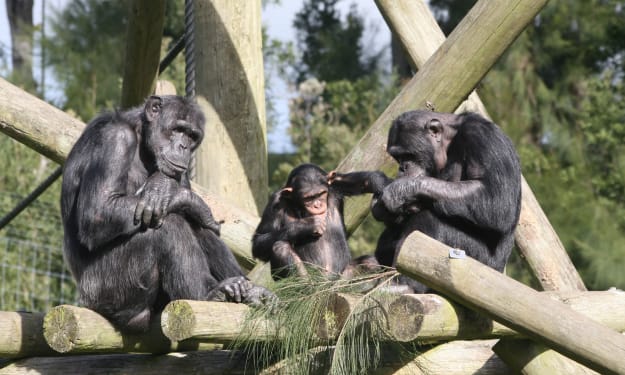Might the origin of life have something to do with it? Earth is the only known planet with plate tectonics
Earth is the only known planet with plate tectonics

Earth's plate tectonic movements have profoundly influenced the nature, behaviour and evolution of the Earth, but there has been no definitive answer to the question of when plate tectonics began. The timing and mechanism of the initiation of Earth's plate movements has been a highly debated scientific issue in the field of tectonic geology. The study suggests that plate tectonic movements may have occurred on Earth at least 3.6 billion years ago or even earlier.
According to new research by scientists on some of the world's oldest mineral crystals, the Earth's tectonic plates have been moving continuously since plate tectonics emerged 3.6 billion years ago. Previously, researchers believed that these plates formed between 3.5 and 3 billion years ago, and unpublished studies have even estimated them to be 3.7 billion years old. Scientists in this new study have discovered the date of the start of tectonic movement of the Earth's plates by analysing ancient zircon crystals from the Jack Hills in Western Australia. Some of these zircons date back even further than 4.3 billion years, meaning that they began to exist when the Earth was only 200 million years old - geologically speaking, a baby. By using these zircon mineral crystals, as well as younger zircons dating back to 3 billion years ago, the researchers hope to explain the ongoing chemical record of the Earth.
By studying the oldest minerals, experts believe Earth's plate tectonic movements may have begun 3.6 billion years ago. In a new research statement, Michael Axon, a research geologist at the Smithsonian's National Museum of Natural History in Washington, D.C., said, "We are reconstructing the way the Earth changed from a molten ball of rock and metal to today." Plate tectonics refers to the sliding of giant flat plates of solid rock over the mantle (the layer beneath the Earth's crust). These continental plates move, break up and collide, causing earthquakes to occur, mountains to grow and oceans to form. The researchers note that no other known planetary body other than the Earth has plate tectonics. It has been reported that the origin of life on Earth may have been due to plate tectonic movements.
For example, over time, rocks trap carbon dioxide, a greenhouse gas that helps warm the planet (although too much CO2 causes global warming), and plate tectonic movements ensure that these rocks are eventually dragged and melted and trap the CO2, which Life Sciences has reported was ejected through volcanoes, a process without which the Earth would probably have frozen. However, trying to pinpoint the earliest point of plate tectonic movement can be challenging as the earliest plate tectonics have been obscured and in geological generations. To investigate, Professor Ackerson and his colleagues collected 15 grapefruit-sized rocks from Jack Hills and crushed them into their smallest mineral components to form sand. Fortunately, the zircons were so dense that they were easily separated from the rest of the sand using a method similar to gold panning.
Next, the researchers took the zircons (more than 3,500 in total) and broke them up with a laser in order to measure their chemical composition using mass spectrometry. The team also determined the uranium content of each zircon's age by measuring the known rate of decay, which allowed the scientists to determine how long each sample had the radioactive element present. However, only 200 of these zircons are "suitable" for study, meaning they retain their chemical properties from billions of years ago. Professor Ackerson said, "Deciphering the secrets in these minerals is no easy task and we have analysed thousands of these crystals to provide some useful data points, but each sample has the potential to tell us something completely new and reshape our understanding of the origin of the Earth and the origin of life."
The team also looked at the aluminium content of each zircon, and studies of modern zircons have shown that high-alumina zircons form in only a few ways. Geologically speaking, therefore, the presence of aluminium in ancient zircons provides clues about how they were produced and what was going on at the time. After analysing 200 zircons, the researchers found a significant increase in aluminium content some 3.6 billion years ago, while each zircon is only a few human hairs wide. Professor Ackerson noted that this change in composition could mark the beginning of tectonic movement of the Earth's plates and "potentially could mark the emergence of life on Earth, but we will need to do more research to determine the link between this geological shift and the origin of life." The team linked the high-alumina zircons to the timing of the Earth's plate tectonic movements, as one of the ways these unique zircons formed was when rocks melted deep beneath the Earth's surface. Ackerson said, "It's very difficult to 'melt' aluminium into zircon because of its special chemical bonding and you need to have very extreme geological conditions."
The researchers stress that if rocks melt deep below the Earth's surface, then the crust (the outermost layer of the planet) could thicken and begin to cool. The team noted that this thickening is likely to be a transitional process leading to plate tectonic movement. A previous study by scientists of rocks in the 4-billion-year-old Acasta Gneiss Complex in northern Canada also showed that the crust was thickening at the time, which caused rocks to melt more than ever in the planet's interior.
Could the origin of life be linked to this? Earth is currently the only planet known to have plate tectonics. The results from the Acasta gneiss give us more confidence in the interpretation of the Jack Hill zircons," says Professor Axon. Today, the sites are thousands of miles apart, but they tell us a very consistent story of a globally significant event that took place about 3.6 billion years ago." Next, Professor Ackerson plans to look for traces of ancient life in the Jack Hill zircons. He also plans to look for other very old zircon minerals to see if they give similar results for the thickening of the Earth's crust about 3.6 billion years ago.
About the Creator
Vicky
The world is so wonderful, let's get to know the world together!
Enjoyed the story? Support the Creator.
Subscribe for free to receive all their stories in your feed. You could also pledge your support or give them a one-off tip, letting them know you appreciate their work.






Comments
There are no comments for this story
Be the first to respond and start the conversation.